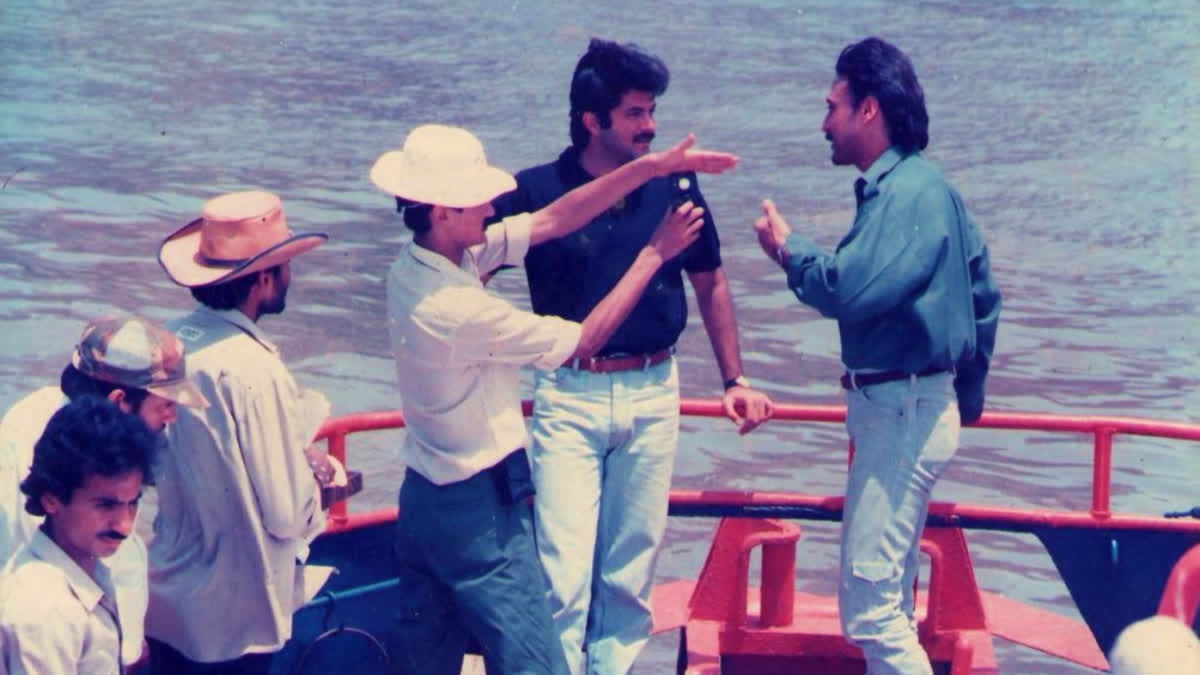In 1989, Parindabrought a new wave of realism and grit to Hindi cinema, moving away from formulaic romance, sanitised action scenes and melodrama to delve into the murky, violent world of gangsters and betrayal. Raw, intense, and unabashedly bleak, Parindais a story of two brothers on opposite ends of morality caught in the crosshairs of crime and duty.
Parinda tells the tale of Kishan (Jackie Shroff) and Karan (Anil Kapoor), two brothers navigating the dangerous underworld of Mumbai. Kishan is entrenched in the mob, and has compromised his morals to survive. Karan, on the other hand, returns from abroad with idealistic dreams, only to find himself pulled into the vortex of crime his brother is part of.
How Parinda Influenced Bollywood
The film’s appeal lies in its refusal to sugarcoat reality. By 1989, Bollywood had seen its fair share of crime dramas, but none approached the genre with Vidhu Vinod Chopra’s level of authenticity. It is a film steeped in atmospheric details, from the grimy bylanes of Mumbai to the flickering lights of dingy bars.
Parinda paved the way for films like Satya, Company, and Gangs of Wasseypur, ushering in an era of movies unafraid to delve into the darker side of society. Chopra took a genre that Bollywood had often approached with a sense of theatricality and gave it a new blueprint. Without the success of Parinda, it’s hard to imagine the mainstream acceptance of films that explore grey morality in the same way.
The film's leading man Anil Kapoor tweeted: "35 years ago, we had the audacity, the confidence, and the cool arrogance to call it ‘the most powerful film ever made.’ And to this day, Parinda continues to stand the test of time."
One of Parinda’s greatest contributions was its layered characterisation, where no one was wholly good or evil. The film presents complex protagonists in Karan and Kishan, both brothers caught in a spiral of moral dilemmas and conflicting loyalties. This layered storytelling inspired directors to create protagonists that aren’t just heroes or villains but conflicted individuals torn between duty and personal desire. For instance, Anurag Kashyap’s Gangs of Wasseypurchannels Parinda’s exploration of familial ties and personal vendettas. Kashyap’s characters live in a morally grey world, where violence is a necessary evil, and loyalties are tested at every turn.
Parindaset the tone for films that would portray crime without the safety net of fantasy. Before this cult classic, Bollywood's depictions of the underworld often felt theatrical, sometimes even sanitised. Chopra introduced a realism that was raw, visceral, and unyielding. We see this echoed in Ram Gopal Varma’s Satya,a film that took Parinda’s approach to crime drama and ran with it, plunging the viewer into the dark heart of Mumbai’s ganglands. Satyatook Parinda’s gritty portrayal of Mumbai’s streets and gave it a documentary-like feel, painting the city as a claustrophobic maze of danger and loyalty gone awry.
The soundtrack wasn’t just a backdrop. It was an integral part of the film’s emotional landscape. Songs like Tum Se Milkeadd fleeting innocence amidst violence. This use of music to deepen the mood and narrative was later mirrored in films like Maqbool, where Vishal Bhardwaj employs haunting musical themes to amplify the despair and intensity of a crime-ridden world. By treating music as a character itself, Parinda opened the doors for Bollywood to experiment with using soundscapes that went beyond conventional song-and-dance routines.
Pioneer In Cinematography And Gritty Realism
Binod Pradhan’s cinematography deserves special mention. The film used shadows, muted lighting, and tight framing to give a sense of both intimacy and oppression, capturing the characters’ psychological turmoil and the grim streets of Mumbai. Scenes are meticulously crafted to reflect the emotional tone of the characters. This approach would inspire the look and feel of later films, particularly in sequences set in the darker corners of the city. Varma’s Company, for example, borrows from Parinda’s visual language, using shadows and tight, confined spaces to depict the suffocating life of crime and the constant presence of danger.
Chopra’s direction, too, is notable for how it balances restraint and intensity, drawing viewers into the inner lives of his characters without veering into melodrama. Before Parinda, most Bollywood films dealt with crime and action in an almost theatrical manner, keeping violence at arm’s length. This 1989 movie broke that tradition, showing crime for what it is: harsh, brutal and merciless. This gritty realism inspired a generation of newer filmmakers to dive into darker narratives without the gloss.
Characters bled, cried and died, and no scene exemplifies this more than when Karan loses his cop friend Prakash (Anupam Kher) in a brutal shootout. The tragic death reverberates throughout the story, motivating Karan to take justice into his own hands. This portrayal of loss and vengeance added a depth of emotion that elevated the movie from a standard crime thriller to a morally complex drama.
Parinda was among the first Bollywood films to explore the psychological effects of crime on its characters. Unlike earlier films where violence was often glamourised or seen as a passing act, Parinda shows the cost of violence on the human soul. Karan’s grief and anguish after losing his friend Prakash, and the guilt that haunts Kishan, add a layer of emotional depth that makes the viewer question the price of loyalty and revenge. Films like Kaanteand Black Fridaycontinued this exploration, portraying criminals not just as perpetrators of violence but as individuals grappling with their choices and the resulting consequences.
Memorable Dialogues
